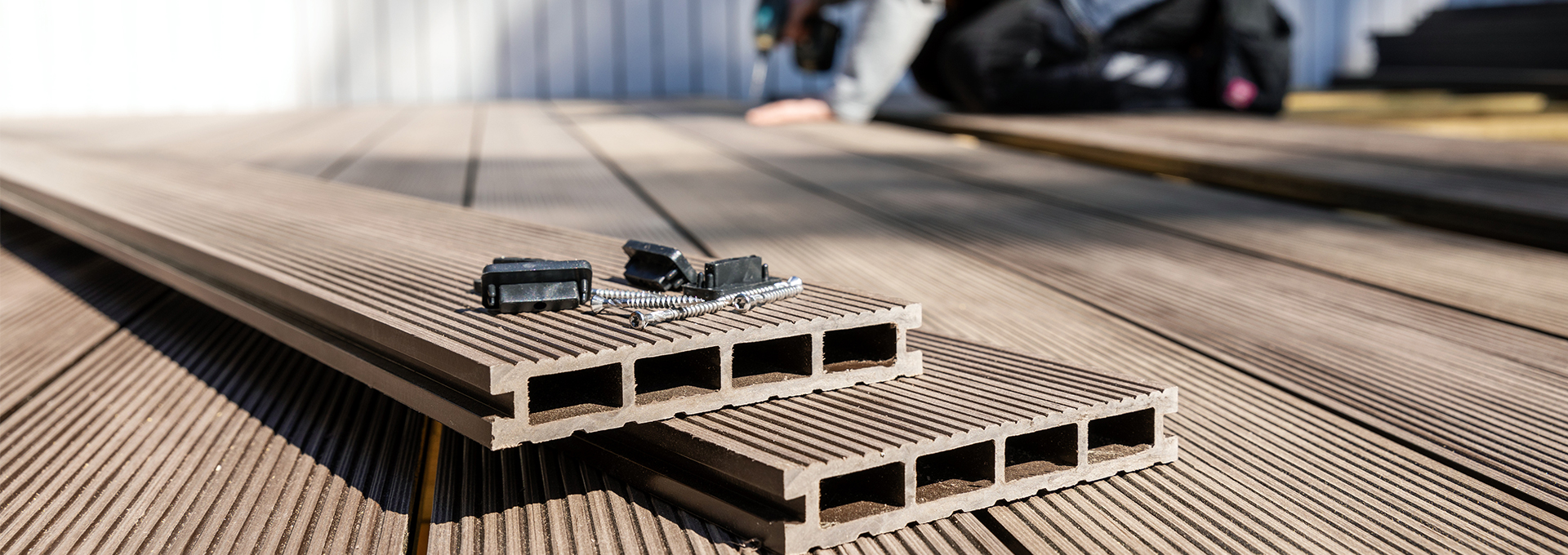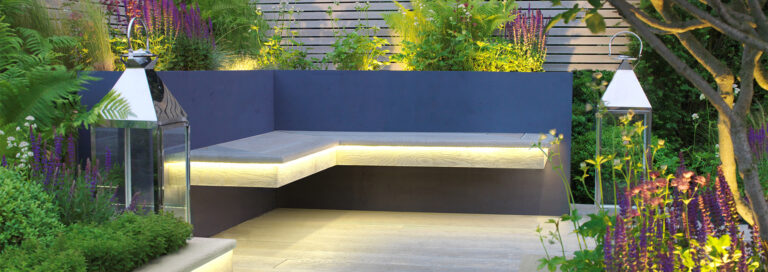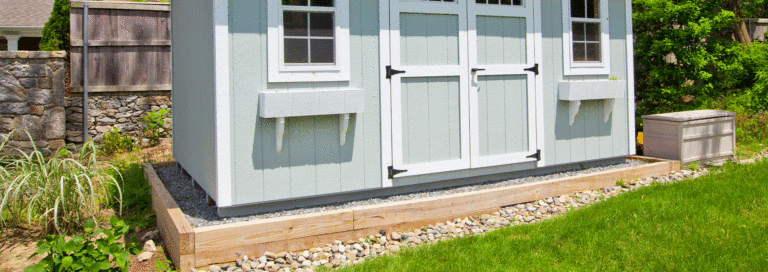As you embark on your quest to find the perfect material for your upcoming deck project, you’re likely to encounter the myriad advantages that composite can bring beyond those of wood. Be it the low maintenance requirements or looks that can rival the age-old allure of traditional timber, understanding what makes the material tic is essential to the decision-making process. And it all starts with the question: “What is composite decking made of?”
This handy guide will give you a clear idea of what composite deck boards are made of, how they’re produced, including a rundown of the properties that make them so popular – minus all the fluff and jargon. With these insights, you’ll be able to make an informed choice about the options available, so your journey to creating a dreamy outdoor haven becomes an absolute doddle. Let’s begin.
What is composite decking?
Step into the world of composite decking, a remarkable and enduring alternative to old-school timber and PVC decking. High-quality composite decking not only captures the timeless appearance and texture of natural wood but also makes a cost-effective choice.
In recent years, we have seen the popularity of composite products skyrocket across outdoor use as both the construction industry and consumer interest in the stuff has grown along with increasing demand for low-maintenance building projects, home renovations and infrastructural development. Thanks to a simple installation and unrivalled ability to ward off mould, decay and splintering, these products are here to stay. But what exactly grants it these properties?
What is composite decking made of?
Imagine composite decking as the practical middle ground or fusion of the durability of synthetic plastic and the classic warmth of traditional wood decking. Often referred to as wood-plastic composites (WPC), these materials hold great promise for your garden thanks to their seemingly endless versatility.
WPCs typically consist of a combination of recycled wood fibres, usually sourced from sawdust or wood shavings, and recycled plastic, often derived from post-consumer sources such as plastic bags and bottles. This mixture is further enhanced with the addition of colouring and bonding agents, creating a durable and attractive composite material.
How is composite decking manufactured?
Behind the scenes, the manufacturing process is a fascinating alchemy, combining recycled plastics and wood fibres, enriched by bonding agents, additives, and a hint of tint.
Recycled wood fibres, recycled plastic, colouring agents, and bonding agents are blended together and then processed through either extrusion or compression methods.
In the case of extruded composite decking boards, the composite mixture is heated until the plastic melts, and then it’s pushed through an opening that defines the size and shape of the decking board. As the material cools, it retains its shape, ultimately yielding the desired composite decking board.
Compressed composite decking boards, however, are created by mixing the same raw materials in a pre-shaped mould. This mix is then heated under pressure to assume the chosen shape when it cools.
In both scenarios, the outcome is a finished decking board with the specified dimensions and colour. Manufacturers employ advanced techniques to offer various finishes and can incorporate visually appealing ridges, textures, or wood-effect patterns on both sides of each board.
Composite decking vs timber vs PVC
Now we have the answer to the question – what are composite deck boards made of – it’s time to draw a quick comparison between the other mainstream decking materials.
What makes composite decks better than plastic?
If you’ve done your research on PVC decking, you might be swayed by their minimal maintenance needs. But what if we told you that one of the many advantages of composite decking is that it’s as easily taken care of? It may be dressed up in a wood-look disguise, but composite requires next to no maintenance, making it ideal for those with children or for projects involving water such as an above-ground deck for a pool. Say goodbye to the thought of sanding or painting it!
Another crucial thing to note is that while plastic deck boards are marginally cheaper, you do get what you pay for in this scenario. Synthetic PVC decking often exhibits a less appealing aesthetic and can be susceptible to bending and splitting. The likelihood of needing to replace your deck in the not-so-distant future is higher, making plastic decking, over the long run, a less cost-effective choice.
How do wood and composite decking compare?
It’s true, timber decking products blow composite substitutes out of the water when it comes to organic aesthetics. However, the appearance of composite has improved in leaps and bounds over recent years. And when you compare the pair’s price points side by side, composite is the obvious winner, particularly given that its lifespan is significantly longer.
Types of composite or WPC decking
If you’ve perused our decking materials comparison and you’re set on the composite route, it’s important to get to know the types available as they have differing strengths and weaknesses. You’ll need to choose between solid, hollow and capped composite boards. Here, it’s all about finding the right type for the job.
Solid composite decking
Solid composite decking is made from a solid piece of composite material, offering a robust and sturdy option for your decking needs. The entire board is composed of the same material throughout, providing durability and resistance to issues like warping or sagging. Solid composite boards often emulate the appearance of real wood and are well-suited for heavy traffic areas where the highest possible performance is required.
Capped composite decking
Capped composite decking features a protective layer, or cap, on the surface of the board. This cap is typically made from a tough, moisture-resistant material that shields the core of the board from the elements. Capped decking is highly resistant to staining, fading, and moisture damage, making it a long-lasting and low-maintenance choice.
Hollow composite decking
Hollow composite decking boards have a hollow core, which reduces their weight while maintaining structural integrity. These boards are typically more lightweight and cost-effective than their solid counterparts. Hollow composite decking is a suitable choice for residential decking projects and is often used for low-traffic areas. The hollow core can also make installation easier due to reduced weight.
Final thoughts: Embracing the composite quality
There we have it: everything you could possibly want to know about what composite decking is made of and how it’s produced. If there’s one key takeaway from this article, it’s that this hardy material has established itself as a leading choice in the UK decking industry for a good reason.
Composite decking seamlessly marries together the strengths of wood and plastic, offering the durability and resilience needed to withstand the rigours of outdoor living whilst preserving the aesthetics of traditional wood. Its durability, low maintenance requirements, and wealth of colours and finishes make it a versatile and stylish option for all decking projects.
As you consider your outdoor space and envision a beautiful, long-lasting deck, embracing the composite quality may be the smart and financially savvy choice. To find the perfect match for your garden, explore our wide range of outstanding composite decking products.




